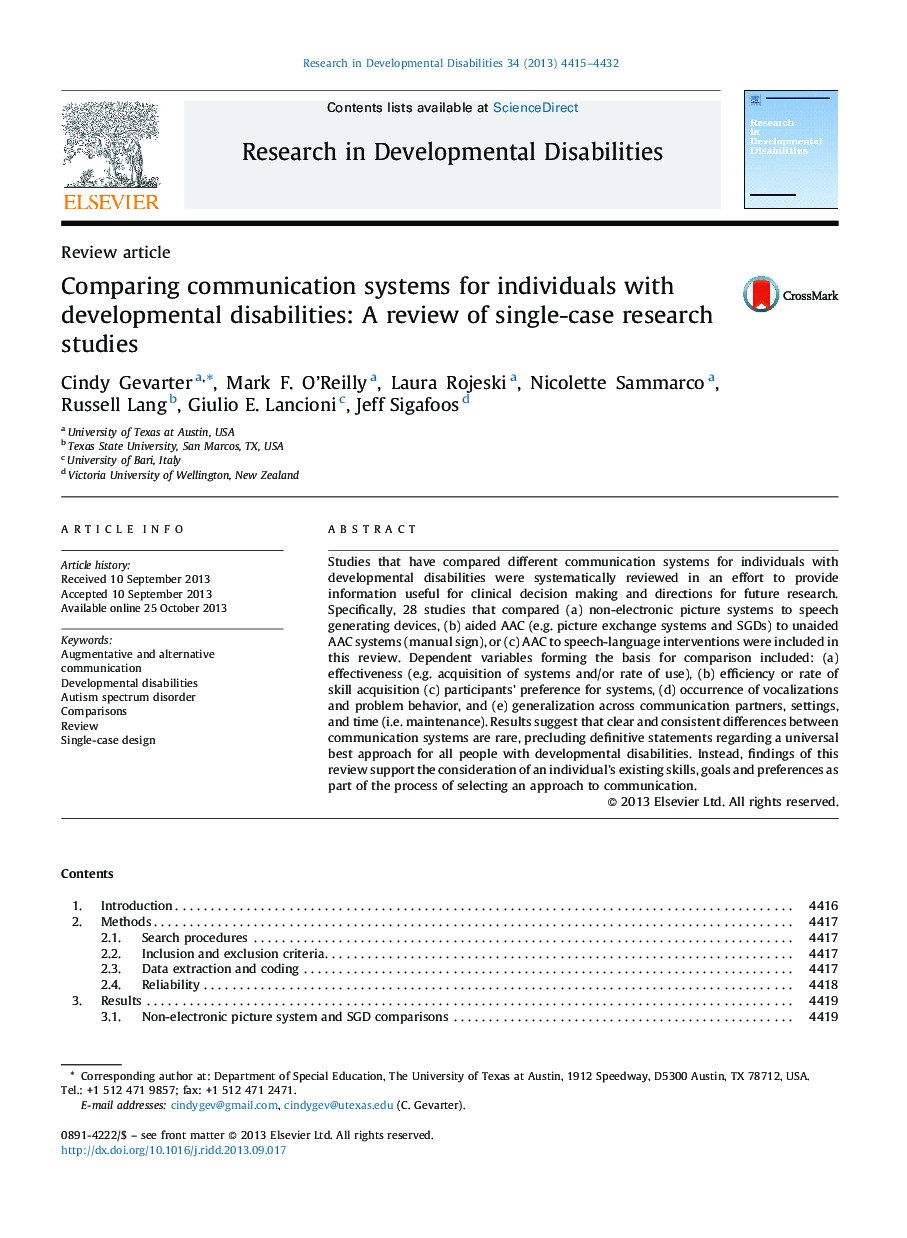| Article ID | Journal | Published Year | Pages | File Type |
|---|---|---|---|---|
| 10317822 | Research in Developmental Disabilities | 2013 | 18 Pages |
Abstract
Studies that have compared different communication systems for individuals with developmental disabilities were systematically reviewed in an effort to provide information useful for clinical decision making and directions for future research. Specifically, 28 studies that compared (a) non-electronic picture systems to speech generating devices, (b) aided AAC (e.g. picture exchange systems and SGDs) to unaided AAC systems (manual sign), or (c) AAC to speech-language interventions were included in this review. Dependent variables forming the basis for comparison included: (a) effectiveness (e.g. acquisition of systems and/or rate of use), (b) efficiency or rate of skill acquisition (c) participants' preference for systems, (d) occurrence of vocalizations and problem behavior, and (e) generalization across communication partners, settings, and time (i.e. maintenance). Results suggest that clear and consistent differences between communication systems are rare, precluding definitive statements regarding a universal best approach for all people with developmental disabilities. Instead, findings of this review support the consideration of an individual's existing skills, goals and preferences as part of the process of selecting an approach to communication.
Keywords
Related Topics
Life Sciences
Neuroscience
Behavioral Neuroscience
Authors
Cindy Gevarter, Mark F. O'Reilly, Laura Rojeski, Nicolette Sammarco, Russell Lang, Giulio E. Lancioni, Jeff Sigafoos,
